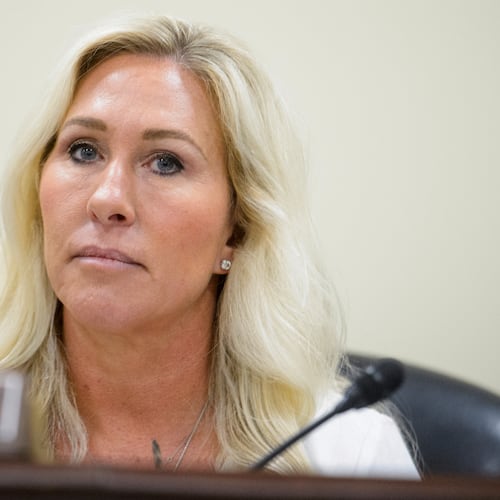Percentage of land in each state controlled by state and federal governments in 2014:
Georgia — 8.5 percent
Florida — 29.7 percent
North Carolina — 14.8 percent
Tennessee — 10.7 percent
Alabama — 5.3 percent
South Carolina — 10.7 percent
Source: Georgia Department of Natural Resources.
Percentage of land in each state controlled by state and federal governments in 2014:
Georgia — 8.5 percent
Florida — 29.7 percent
North Carolina — 14.8 percent
Tennessee — 10.7 percent
Alabama — 5.3 percent
South Carolina — 10.7 percent
Source: Georgia Department of Natural Resources.
UPDATED: Georgians have much less publicly owned land to play in than virtually every one of their Southern neighbors.
State and federal lands cover only 8.5 percent of Georgia’s 58,000 square miles, according to the state’s Department of Natural Resources. Nearly 30 percent of Florida, by contrast, is under state or federal control.
Much of the land tallied by DNR is made up of military bases, state and national parks, wildlife management areas and publicly-owned forests.
Georgia’s public lands include dozens of hunting tracts, Cumberland Island, the Chattahoochee National Forest and Ocmulgee National Monument. Forts Stewart, Benning and Gordon, owned by the Department of Defense, comprise huge swaths of Georgia territory, but most is off-limits to civilians.
The public-ownership discrepancies are even greater when only state-owned land is tallied. Only 1.6 percent of Georgia is controlled by the state. In South Carolina, it’s 2.4 percent. Florida: 15.9 percent.
“Georgia has gotten some good funding and some good support. We’ve been able to do some great projects,” said Steve Friedman, who heads up DNR’s real estate division. “Guys like me always want more, but there are always a lot of things to consider.”
Friedman has received, on average, about $5 million the last couple of years from the General Assembly to buy land. The federal government and private foundations chip in millions annually also.
Florida, since 1990, has had an annual land acquisition budget of $300 million. Legislative efforts this year to set aside a Georgia land fund are dead.
The 20,000-acre Paulding Forest wildlife management area is a recent feather in Georgia’s land acquisition cap. Friedman’s group, and other partners, are now targeting as much as 100,000 acres in the coastal plain as land for gopher tortoise habitat.
About the Author
Keep Reading
The Latest
Featured



